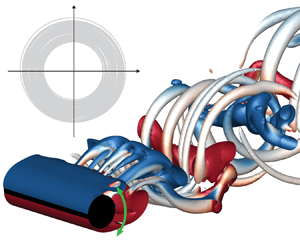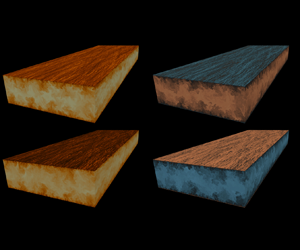doi:10.1017/jfm.2024.1073 Balasubramanian et al. Bursting bubble in an elastoviscoplastic medium
JFM Papers
Release of a finite volume of viscous fluid over rigid curvilinear surfaces
-
- Published online by Cambridge University Press:
- 09 December 2024, A19
-
- Article
-
- You have access
- Open access
- HTML
- Export citation
Optimisation and modelling of eddy viscosity in the resolvent analysis of turbulent channel flows
-
- Published online by Cambridge University Press:
- 23 December 2024, A20
-
- Article
-
- You have access
- Open access
- HTML
- Export citation
Hydrodynamic performance of a floating fluid-filled membrane breakwater: experimental and numerical study
-
- Published online by Cambridge University Press:
- 11 December 2024, A21
-
- Article
-
- You have access
- HTML
- Export citation
Time-dependent low-rank input–output operator for forced linearized dynamics with unsteady base flows
-
- Published online by Cambridge University Press:
- 11 December 2024, A22
-
- Article
-
- You have access
- Open access
- HTML
- Export citation
Unsteady motion of nearly spherical particles in viscous fluids: a second-order asymptotic theory
-
- Published online by Cambridge University Press:
- 11 December 2024, A23
-
- Article
-
- You have access
- HTML
- Export citation
Influence of three-dimensionality on wake synchronisation of an oscillatory cylinder
-
- Published online by Cambridge University Press:
- 11 December 2024, A24
-
- Article
-
- You have access
- Open access
- HTML
- Export citation
Opposite effects of a reaction-driven viscosity decrease on miscible viscous fingering depending on the injection flow rate
-
- Published online by Cambridge University Press:
- 11 December 2024, A25
-
- Article
-
- You have access
- Open access
- HTML
- Export citation
Bubble shape oscillations in a turbulent environment
-
- Published online by Cambridge University Press:
- 11 December 2024, A26
-
- Article
-
- You have access
- HTML
- Export citation
Friction and heat transfer in forced air convection with variable physical properties
-
- Published online by Cambridge University Press:
- 11 December 2024, A27
-
- Article
-
- You have access
- Open access
- HTML
- Export citation
Waves and non-propagating modes in stratified MHD turbulence subject to a weak mean magnetic field
-
- Published online by Cambridge University Press:
- 11 December 2024, A28
-
- Article
-
- You have access
- HTML
- Export citation
Turbulent flow over random sphere packs – an investigation by pore-resolved direct numerical simulation
-
- Published online by Cambridge University Press:
- 12 December 2024, A29
-
- Article
-
- You have access
- Open access
- HTML
- Export citation
Hindered settling of a log-normally distributed Stokesian suspension
-
- Published online by Cambridge University Press:
- 12 December 2024, A30
-
- Article
-
- You have access
- Open access
- HTML
- Export citation
Large-eddy simulation-based shape optimization for mitigating turbulent wakes of a bluff body using the regularized ensemble Kalman method
-
- Published online by Cambridge University Press:
- 12 December 2024, A31
-
- Article
-
- You have access
- HTML
- Export citation
Single-snapshot machine learning for super-resolution of turbulence
-
- Published online by Cambridge University Press:
- 12 December 2024, A32
-
- Article
-
- You have access
- Open access
- HTML
- Export citation
Mapping the properties of wake-induced vibration on a circular cylinder
-
- Published online by Cambridge University Press:
- 13 December 2024, A33
-
- Article
-
- You have access
- HTML
- Export citation
Velocity fluctuations for bubbly flows at small Re
-
- Published online by Cambridge University Press:
- 13 December 2024, A34
-
- Article
-
- You have access
- Open access
- HTML
- Export citation
Data-driven active control of a thin elliptical cylinder undergoing transverse flow-induced vibrations
-
- Published online by Cambridge University Press:
- 13 December 2024, A35
-
- Article
-
- You have access
- Open access
- HTML
- Export citation
Flame acceleration and detonation transition in premixed and inhomogeneous supersonic flows
-
- Published online by Cambridge University Press:
- 13 December 2024, A36
-
- Article
-
- You have access
- HTML
- Export citation
Developing a non-Newtonian fluid model for dust, for application to astrophysical flows
-
- Published online by Cambridge University Press:
- 13 December 2024, A37
-
- Article
-
- You have access
- Open access
- HTML
- Export citation
Linear models of strip-type roughness
-
- Published online by Cambridge University Press:
- 13 December 2024, A38
-
- Article
-
- You have access
- Open access
- HTML
- Export citation























































































